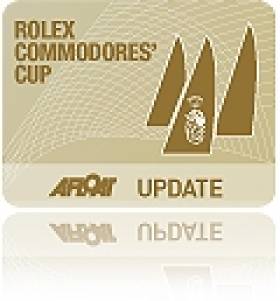Displaying items by tag: timetable
Rio 2016 Olympic Sailing Regatta Schedule Published
A provisional racing schedule for the Rio 2016 Olympic Sailing Competition set to be held in Rio de Janeiro, Brazil from 5-21 August 2016 has been released. Download the race schedule below. Three Irish boats have qualifed for Rio and a fourth may qualify next month. An Irish Race Officer will also officiate at the regatta.
The Pão de Açucar, Ponte and Escola Naval courses inside Guanabara Bay and the Copacabana and Niteroi areas outside the bay are to be utilised. The reserve course areas are Aeroporto, an additional course situated in-between Ponte and Escola Naval in Guanabara Bay, and Pai, outside Guanabara Bay.
Racing is set to start on Monday 8 August at 13:00 local time with the Men's and Women's RS:X sailing on the Pão de Açucar race track. The Laser and Laser Radial fleets will also commence their competition on Escola Naval course on the same day.
The Finn sailors will start racing on Tuesday 9 August on the Pão de Açucar area with the Men's and Women's 470 as well as the Nacra 17 following on Wednesday 10 August. The 49er and 49erFX are the last fleets to start and get going on Friday 12 August.
The first Medal Races will take place on Sunday 14 August with two per day scheduled until Thursday 18 August where the 49er and 49erFX will bring the regatta to a close.
With the schedule shared with the sailors, the announcement has been met with anticipation, and the feedback given with an emphasis on the diversity and beauty of the courses at the forefront of their minds.
Men's 470 London 2012 gold medallist, Australia's Mat Belcher said, "It's much anticipated as the teams want to know what they can expect at the Games and there has been a lot of speculation where different classes are going to race. I guess we are all really excited now it has come out.
"The unique thing about Rio, and the great thing about Rio, is the diversity of the conditions and also the diversity of the different race areas, and that makes for the best all-round sailor.”
On the mixture of racing areas, five-time Olympic medallist, and Brazil's very own Robert Scheidt agreed, "We are going to have many courses which we are going to sail in. I think this is good because it really tests the ability of the sailors in different conditions. It is a place where the sailor has to be very flexible and adapt himself.”
Heading into her third Olympics, Belgium's Evi Van Acker is also excited about what is on the horizon, "It's a nice mix of everything, sailing inside and outside, and I think it's the most fair for everyone to do a bit of everything. I love the venue. Every course is different so it's good that we sail on them all.”
With the sailors agreeing that Rio 2016 offers a fantastic mix to test the sailors, they also agree that the Rio Games will put sailing into the spotlight by featuring the Medal Races close to the iconic beaches.
"As a Brazilian, it would be amazing to sail in the Medal Race because we know it will be a big crowd out there," said an expectact Scheidt. "The Brazilian flags will be flying and there will be support from thousands of people watching the race.”
Belcher said, "What's great about Rio is the anticipation of racing closer to shore. It's very difficult for the sailors, but for our sport we need to generate more interest from the public and what better way to do it than seeing so many spectators lining Flamengo Beach to watch us race.”
Echoing the thoughts, Van Acker added, "I expect everyone to be on the beach. It's great as the spectators don't get much chance to see us racing and it will be beautiful in Rio for them to watch.”
The release of the schedule not only gave the three sailors a better picture of what they can expect next year, but it also stirred up some emotions from Scheidt as he reflected on his Olympic Laser career possibly coming to an end in his homeland.
Looking at the schedule, Scheidt concluded, "For myself, I'm only doing this Olympic cycle because the Olympics is in my home country. That's a big thing and I want to feel that emotion. It's going to be something that will stick with me for a long time.
"Will it be my last one? You can never say never you know, but probably yes. I'm already, let's say, an advanced age for the laser, but my body is still holding up well and I think I can be very competitive in Rio, but after that I probably won't continue in the lasers, but let's see the opportunities after the Games.”
Commodores' Cup 2010 Timetable Here!
Saturday, 14 August
Registration/Skippers' briefing/Opening Reception
Sunday, 15 August
2 x Solent inshore races (1.0 each)
Monday, 16 August
2 x Solent inshore races (1.0 each)
Tuesday, 17 August
Offshore race (2.5)
Wednesday, 18 August
Offshore race continues
Thursday, 19 August
Rolex Trophy Day 1 x Solent inshore race (1.0)
Friday, 20 August
Round the Island race (1.5)
Saturday, 21 August
1 x Solent inshore race (AM) (2.0)
Prize Giving (Royal Yacht Squadron) 1700























